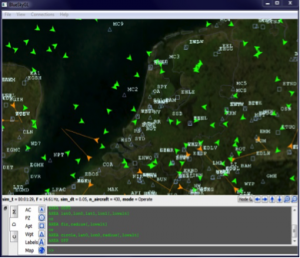Research Description
The current centralized en-route airspace design is nearing saturation. To increase airspace capacity, future plans for the modernization of Air Traffic Management (ATM) systems propose a transfer of the separation responsibility from the ground to the cockpit. Although most researchers agree that some form of decentralization, or ‘self-separation’ will increase capacity, there is no consensus yet on the level of traffic organization, or structuring, that is required to maximize capacity for such decentralized ATM concepts.
Contradicting evidence in literature on the benefits of structure suggests that the relationship between structure and capacity is not well understood, i.e., does more or less structuring lead to higher capacity? Or, is there a transition point, where a further increase in capacity will require a switch from one approach to the other?

Four concepts of increasing structure were compared using fast-time simulations to investigate the effect of airspace structure on capacity for en-route airspace
This research aims to answer these questions by analyzing and modelling the relationship between structure and capacity for decentralized separation. The following research areas have been identified:
- Analysis of the relationship between airspace structure and capacity using fast-time simulations
- Implicit structuring of traffic as a result of tactical conflict resolution algorithms
- Capacity modelling of a layered airspace design
- Dynamic reconfiguration of airspace structure to handle changing traffic demand patterns.



